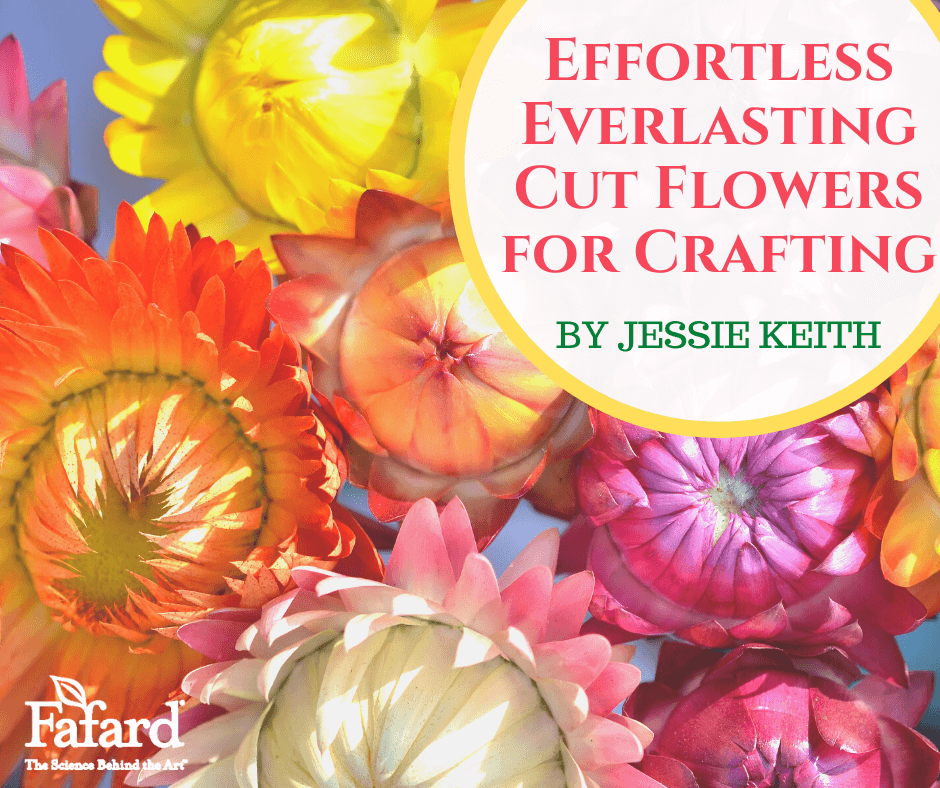
True everlasting flowers hold their shape and color for a long time after drying. Most are grown as annuals, but a few are also perennials that will return yearly. Crafty gardeners should grow some of these each year for arrangements and crafting. They are so bright in the garden and beyond.
I first took an interest in everlastings in the late 1990s. After seeing a few dried in full color, I wanted to grow them for myself. I started with the basics–gomphrena, strawflowers, and statice–but through the years I have grown many more. Here is how to grow these plants followed by the types and varieties that every gardener first dabbling in everlastings must grow.
Growing Everlastings
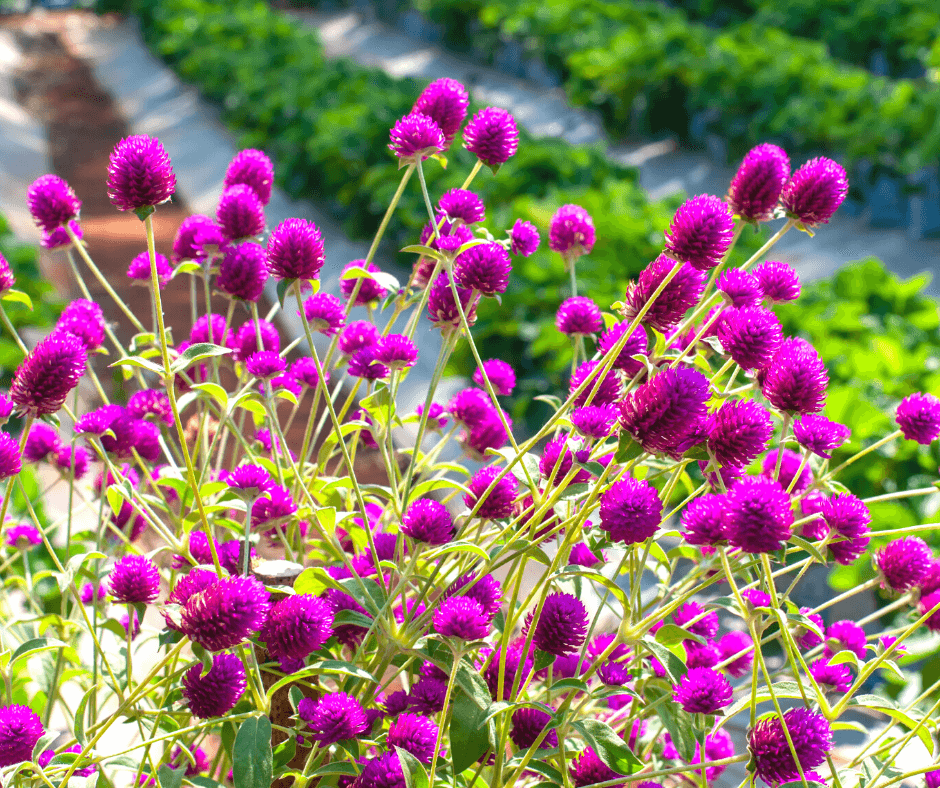
The growing needs of most of these flowers are simple: Start them from seed indoors in spring (click here for general instructions), and plant them in a cutting garden or flower bed with full sun and well-drained soil. (Amending the soil in spring with Fafard Premium Natural & Organic Compost is recommended for good establishment and growth.) Average water will do the trick. Most everlastings are well-adapted to heat.
Everlasting Cut Flowers
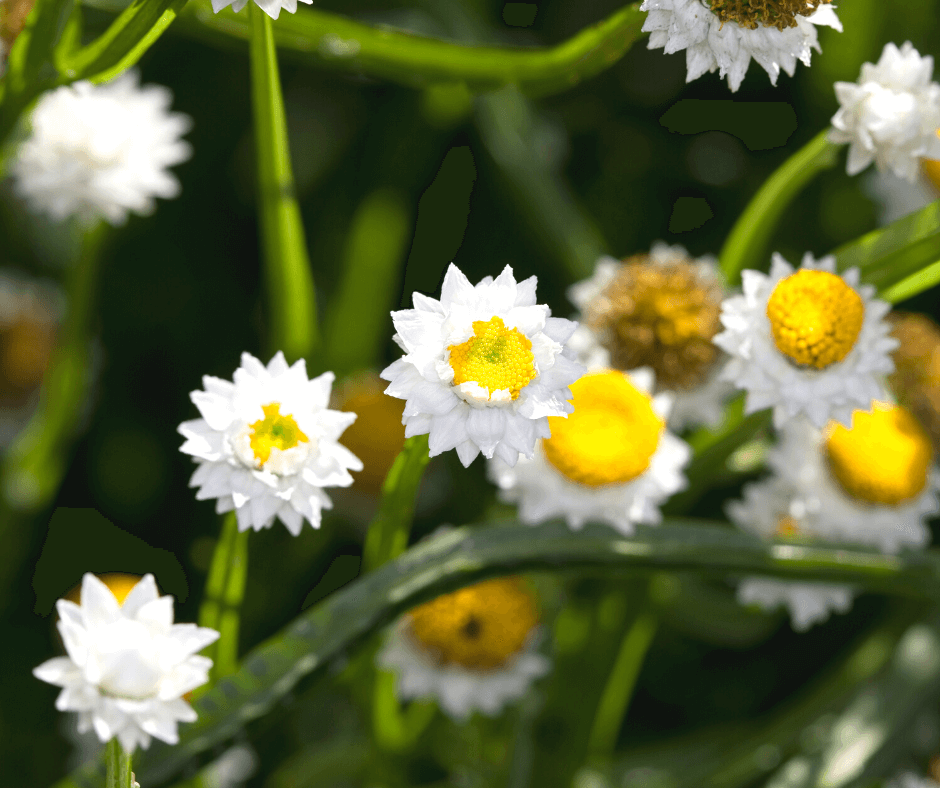
Winged everlasting (Ammobium alatum) is an annual that bears the most delicate stems of white flowers with shimmering papery petals. Cut the summer stems just before you see their yellow centers and dry them upside down until completely dry. They look beautiful in dried winter arrangements!
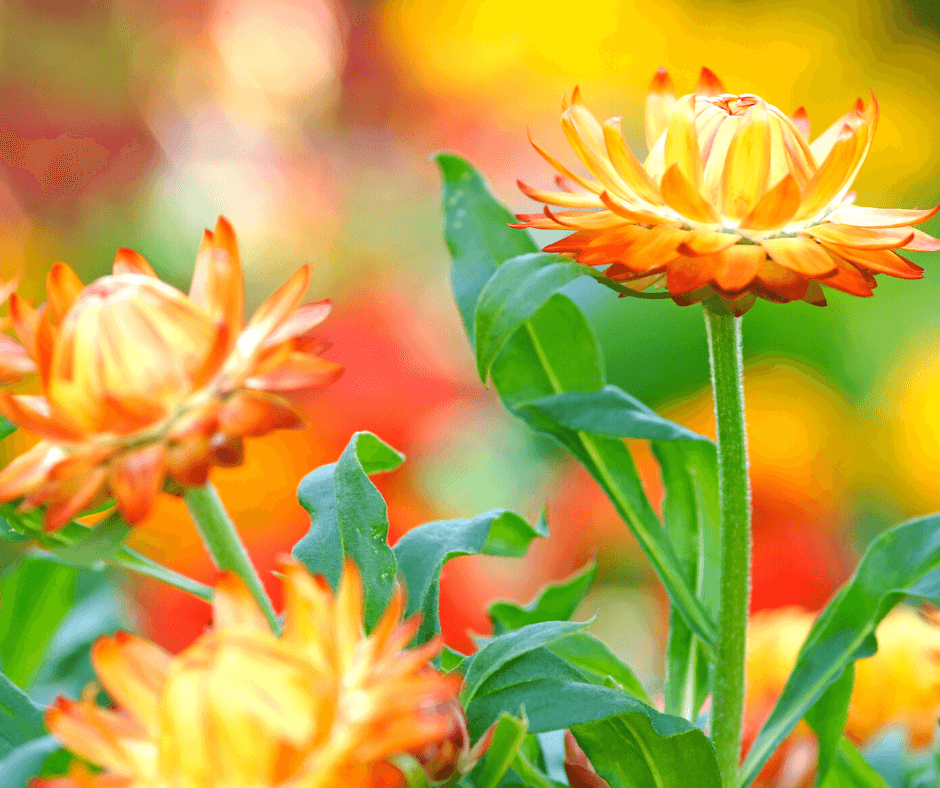
Strawflowers or paper daisies (Helichrysum bracteatum (syn. Xerochrysum bracteatum)) blooms are very colorful–coming in red, orange, pink, purple, yellow, white, or apricot hues. They are quite easy to grow from seed (click here for instructions), but many garden centers sell plants if you don’t have the time or inclination for seed starting. Most seeds are offered as mixes, but not all. Monstrosum Tall Mix, from Johnny’s Selected Seeds, has extra-large, bold flowers on tall stems (to 4 feet!). Two more good ones from Johnny’s are ‘Silvery Rose‘ and ‘Purple Red‘, which would look very striking together. Harvest the blooms for drying just before you see their yellow centers and hang them upside down until dry.
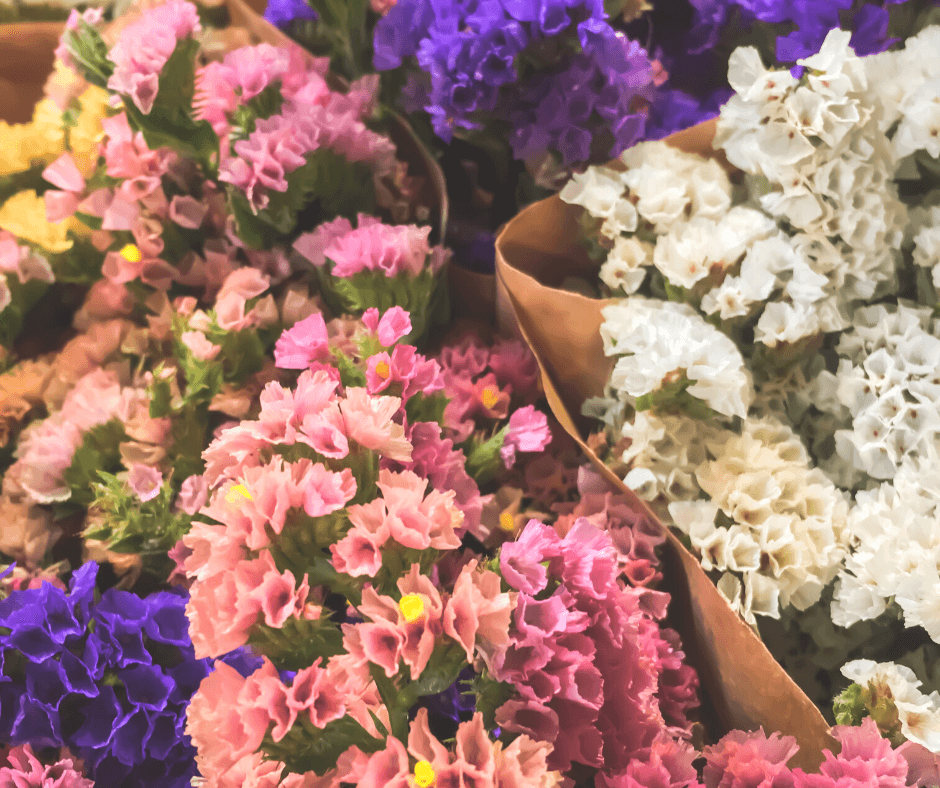
Annual Statice (Limonium sinuatum) looks so pretty fresh or dry. Its clusters of small, papery flowers come in many colors, but the purples and blues are the biggest standouts. Johnny’s Selected Seeds has a full suite of varieties for sale from their cheerful Formula Mix to their breathtaking violet-blue Formula Blue and QIS Apricot, which would pair well. Statice plants form small rosettes of foliage that hug the ground. Flowering stems rise from the center in summer. Cut them to the base at harvest time.
Another statice to add to the list is the perennial statice, sea lavender (Limonium latifolium, Zones 4-9). Grow it for its finer, airier sprays of silvery blue flowers, which are favorite filler flowers in the florist industry. They look great in perennial borders as well.
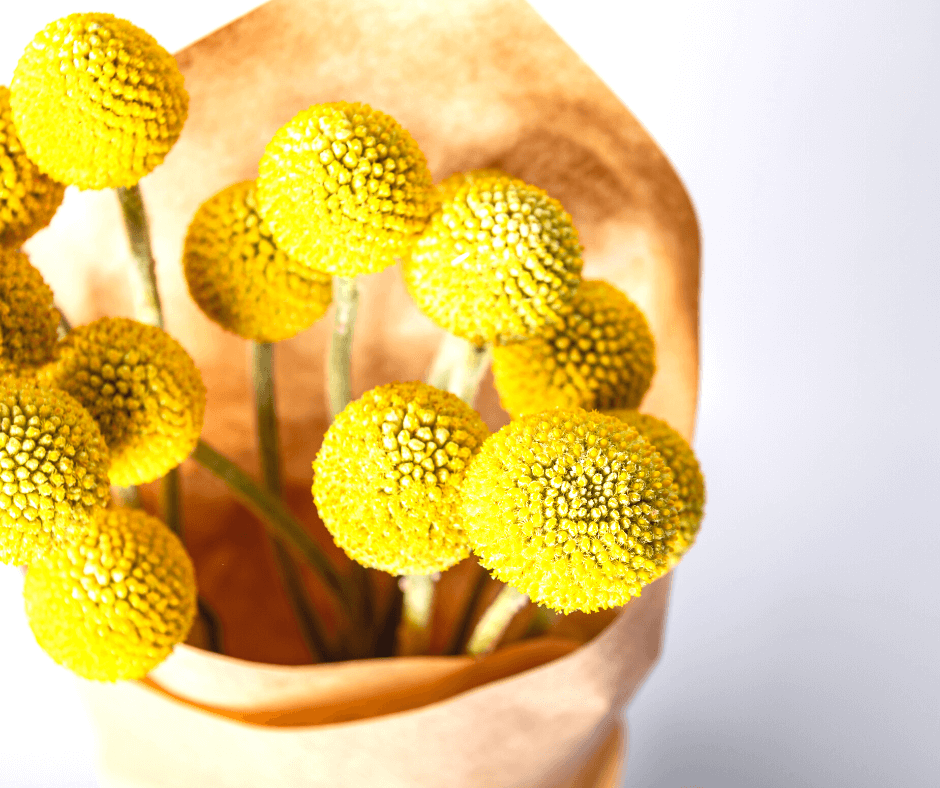
The tender perennial drumstick flower (Craspedia globosa, Zones 8-11) can be grown as both an attractive garden flower and sunny everlasting. Clumps of grassy, silvery leaves bear upright stems of yellow, round flowers in summer. Harvest them just when they turn their brightest color. The strong-stemmed flowers can look good for years in a vase.
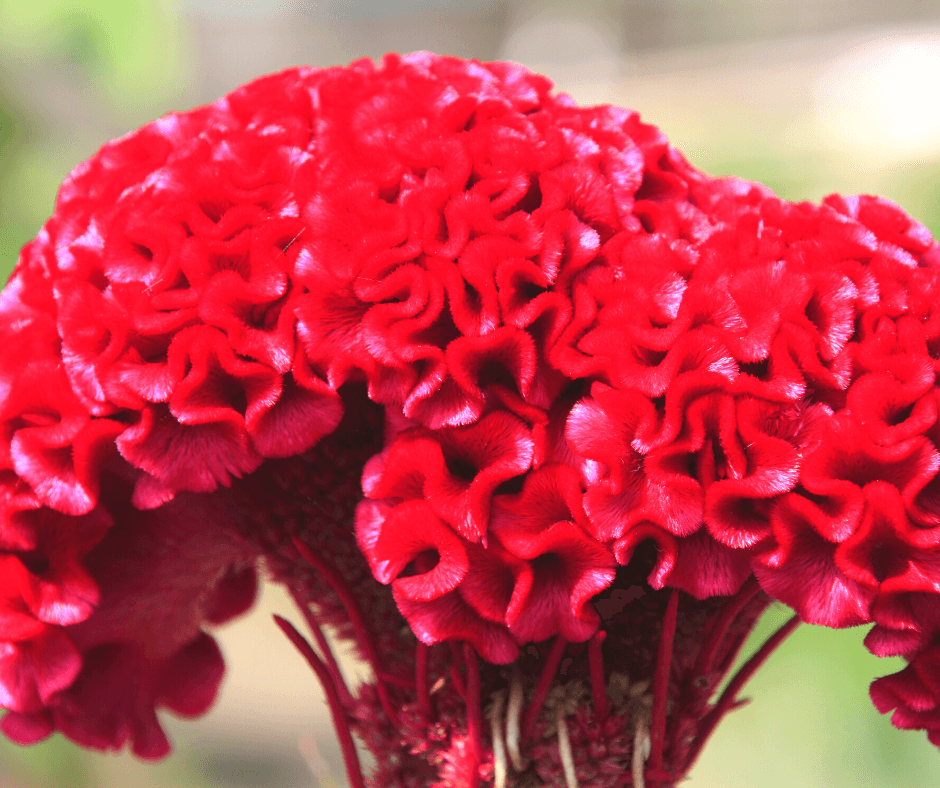
Cockscomb (Celosia plumosa Cristata Group) has undulating, brain-coral-like flowers on taller, strong-stemmed plants. The annuals may come in shades of orange, yellow, or pink, but the reds are the best. The prolific ‘Cramer’s Burgundy‘ is a very deep burgundy-red and may have up to 20 stems per plant! It was selected by a commercial cut flower grower, so you know it must be good. The bright red ‘Indiana Giant‘ has huge cockscombs that remind me of the types that I grew as a child in our Indiana garden. They are spectacular! The taller ‘Tornado Red‘ is another to try.

Globe Gomphrena (Gomphrena globosa and G. haageana) are multi-stemmed, heat-loving garden annuals that bloom nonstop from summer until the end of the season. Their little flowers pack a big punch when gathered into bouquets. They come in purple, red, white, or apricot. One of my favorites to grow is the classic ‘Strawberry Fields, which is a 2-foot plant that produces many long-stemmed red flowers. Another bred for the cut-flower industry, is QIS™ Formula Mix that comes in a mix of white, pale lavender, and deep purple.
Preserving Everlastings
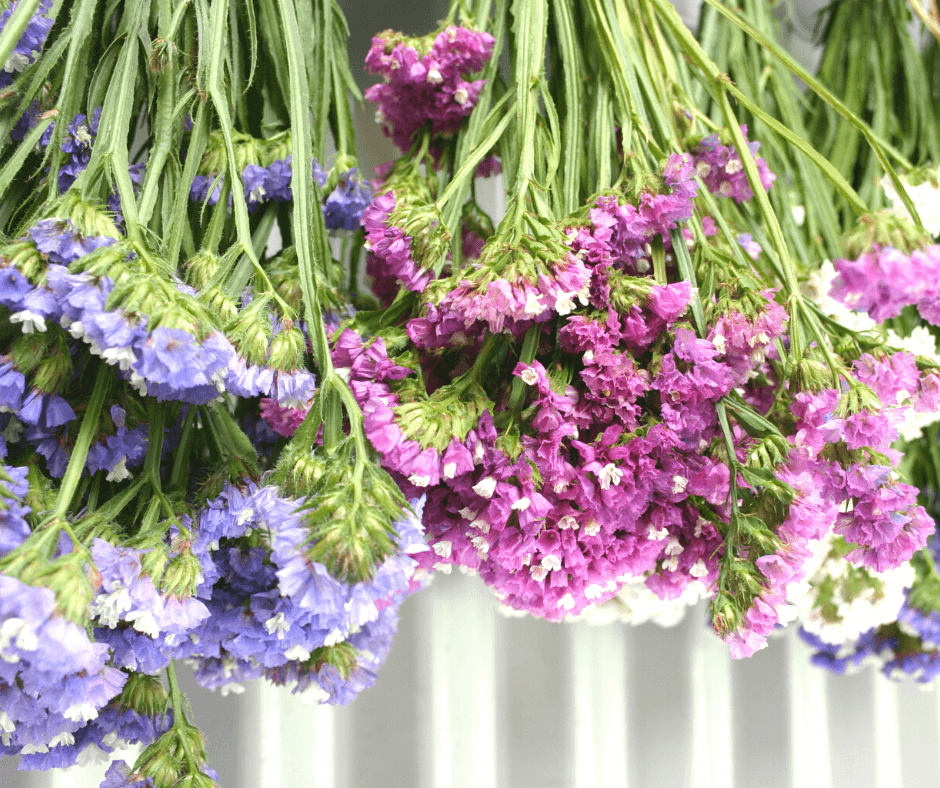
When hanging everlasting flowers to dry, be sure to do it in a cool, dry, dark place for the best preservation. Tie stems in bundles of no more than five to encourage good airflow. Once dry, apply dried flower preserving spray to help retain color and keep the delicate blooms from shattering. It is also important to note that many of the flowers, particularly statice, will lose their color faster if kept in full sun.
Whether you use everlastings for arrangements, colorful potpourri, ornament-making, or wreath-making, it is always nice to have the bright color of everlastings in the home. Harvest them now to enjoy for the rest of the season.

